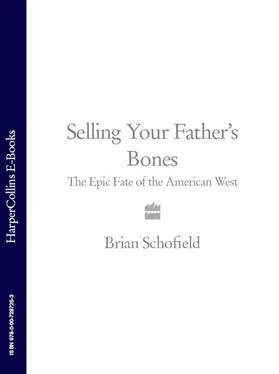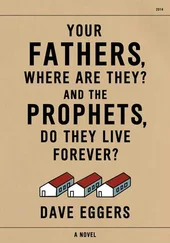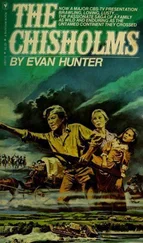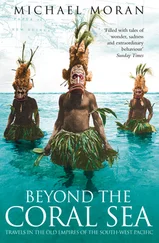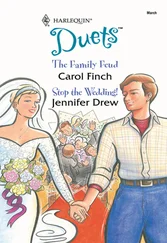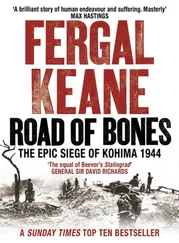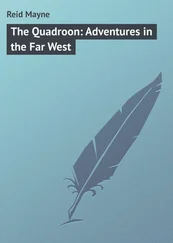
Precisely why four Nez Perce men travelled to St Louis in the summer of 1831 and asked for a copy of the Bible is still fiercely contested. Some historians suggest they encountered this seemingly desirable source of the white man’s power at Rendezvous; others believe they were jealous of the two young male members of the nearby Kootenai and Salish tribes, who had been rented from their families by the Hudson’s Bay Company and sent to boarding school, whence they’d returned in collars and ties, speaking English, reciting the Ten Commandments and humming ‘Amazing Grace’. Yet others suggest that a local prophet had foreseen the arrival of the white man and his great book as heralding the end of this world and the start of a better one, while some modern Nez Perce are keen to revise the spiritual motivation altogether: ‘They didn’t go there for the Bible,’ contends tribal historian Allen Pinkham. ‘They went to learn how to communicate with written words. They wanted the technology of writing, not the Christian faith. We already knew about the Creator. We had our own faith.’
Whatever they wanted, they didn’t get. Two of the men died in St Louis, the other two on the journey home, all unable to resist a city of unfamiliar illnesses. But their mission did cause a sensation — they met their old friend William Clark (perhaps taking the time to let him know that, as a result of his relationship-building endeavours back in 1806, a red-haired Nez Perce was now entering his twenty-fifth year) and visited a Catholic church, while newspapers and Christian societies all the way to the East Coast marvelled at the thought of four ‘Red Men’ wandering through St Louis in full regalia, displaying their manifest hunger for the word of God. A call for missionaries to answer their plea rang out, with this letter to the New York Christian Advocate typically understated: ‘How deeply touching is the circumstance of the four natives travelling on foot 3,000 miles through thick forests and extensive prairies, sincere searchers after truth!…Let the Church awake from her slumbers and go forth in her strength to the salvation of these wandering sons of our native forests.’ For the Nez Perce, this salvation would come in the less than beatific form of the Reverend Henry Spalding.
Photographs of Henry Harmon Spalding are incomplete without a scowl. He was a man of fierce and unforgiving temper, his character a primal soup of vanity and spite, arrogance and churlishness. He may well have fancied that the greasy comb-over dominating the top half of his head and the rampant beard obscuring the bottom half lent him the appearance of a Sistine god; in fact he looks almost precisely as unappealing as his historical legacy. Not surprisingly, this old-fashioned bastard, born of an uncaring mother and an indeterminate father, was unlucky in love, and his routinely black mood can scarcely have been lightened by the companionship, on his 1836 mission to minister to the Nez Perce, of the woman who had broken his heart. Narcissa, travelling with her husband Marcus Whitman, had once rejected Spalding’s hand in marriage but by 1836 he had recovered somewhat and acquired a match, Eliza, who made up the westward-bound foursome, all forced to share a single tent for the entire trip. After two earlier attempts to open a mission in Nez Perce country failed, this unlikely double date was heading to Rendezvous in the hope of meeting the tribes which had sent their emissaries to St Louis, then following them home to establish ministries within their villages. On reaching Rendezvous, the two white women caused a sensation among the attendant natives, most, perhaps even all, of whom had never seen a female Boston, and competition erupted as to which tribe would take these dainty and prestigious visitors home. Ultimately, it was decided that the Whitmans would go and live with the Cayuse in the Walla Walla Valley, while the Spaldings would follow the Nez Perce home, the good reverend demanding, in a sign of things to come, that the Nez Perce clear a path through the forest for his wagon, rather than force his wife into the indignity of riding on a horse.
‘What is done for the poor Indians of this western world must be done soon. The only thing that can save them from annihilation is the introduction of civilisation.’ With that self-proclaimed motto, Spalding launched into the agricultural and technological salvation of the Nez Perce with as much vim as he devoted to his spiritual duties. He dug irrigation trenches, ploughed fields and used the power of the Clearwater River to run a wood saw and flour mill, encouraging the Nez Perce to adopt these new skills, becoming farmers and cattlemen rather than hunters and gatherers. He built a substantial loghouse — or, rather, made the Nez Perce build it for him, then made them take it apart and rebuild it on a spot with a cooler breeze — and set up a schoolroom in which Eliza taught English. The initial response was enthusiastic, with the promise of the secrets of the Good Book and the revelation of labour-saving innovations drawing villages from around the homeland to make camp near Spalding’s settlement at Lapwai on the Clearwater. One of the most influential village leaders, Tuekakas, brought his people to winter at Lapwai each year, returning during summer to their favoured lands in the isolated Wallowa Valley on the western fringe of the Nez Perce territory. He studied the Bible as deeply as the language barrier with Spalding allowed, and was baptized with a Christian name, Joseph. Later, his son would also take the same name. But Tuekakas’ loyalty to Spalding and the Bible were soon tested, as the man and his mission began to disturb and divide the Nez Perce.

The Reverend Henry H. Spalding.
Spalding’s insistence on using a horsewhip to encourage his hosts to labour was one of his earliest transgressions — a humiliation for people raised in a culture that emphasized human dignity — but there were many more. He began to insist that converted Nez Perce should cut their hair, take to western dress and abandon all their traditional faiths and rites, including their wyakin. He began to reveal dark and confusing inconsistencies in his preaching, drawing diagrams of the Presbyterian path to Heaven and the Catholic path to Hell. Strangest of all, when a government agent arrived at the mission in 1843, he and Spalding drew up a list of laws for the Nez Perce to live by, and Spalding hung a metal hoop from a tree to facilitate whippings for the new ‘crimes’, many of which the Nez Perce had been committing for centuries, such as borrowing one another’s food. Spalding and the agent also trampled over Nez Perce concepts of freedom and community by naming a ‘head chief of the tribe, an insubstantial young man called Ellis (Tuekakas and other more senior village leaders were initially bemused and irritated by this seemingly pointless gesture, but within years its capacity for devastation would become clear).
Thus the voices of dissent towards Spalding’s way grew ever stronger. Elder spiritual leaders questioned the wisdom of scarring Mother Earth with a plough, forcing her to work rather than simply accepting her gifts; stories abounded that the great diseases which had destroyed neighbouring tribes had arrived as a punishment for similar violence towards the soil. They also questioned Spalding’s new devices, the mills and the saws, as insults to the way of life that the Creator had specifically given to the Nez Perce to preserve. In their support was the swirl of rumours brought back from buffalo hunts to the east, of what had happened to other tribes who had welcomed the missionaries — invasion, settlement, displacement, destitution.
Читать дальше
